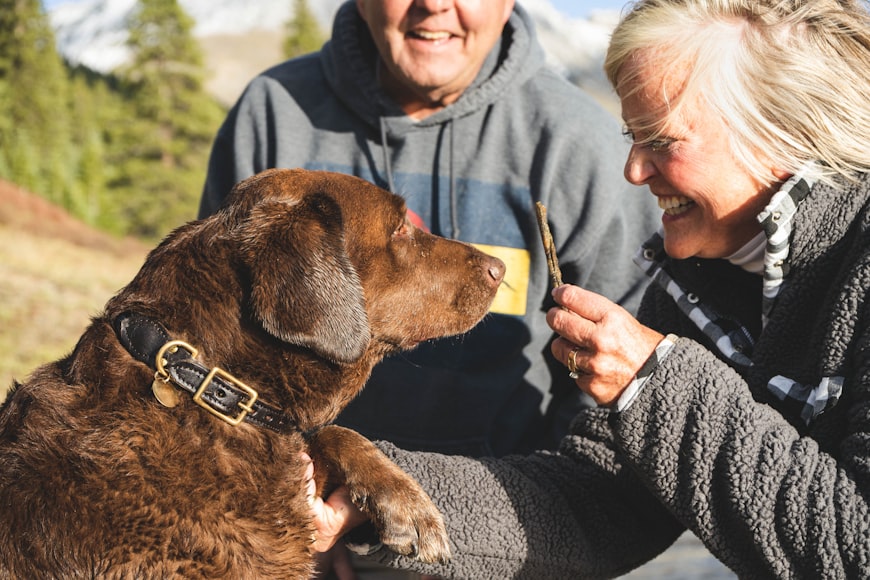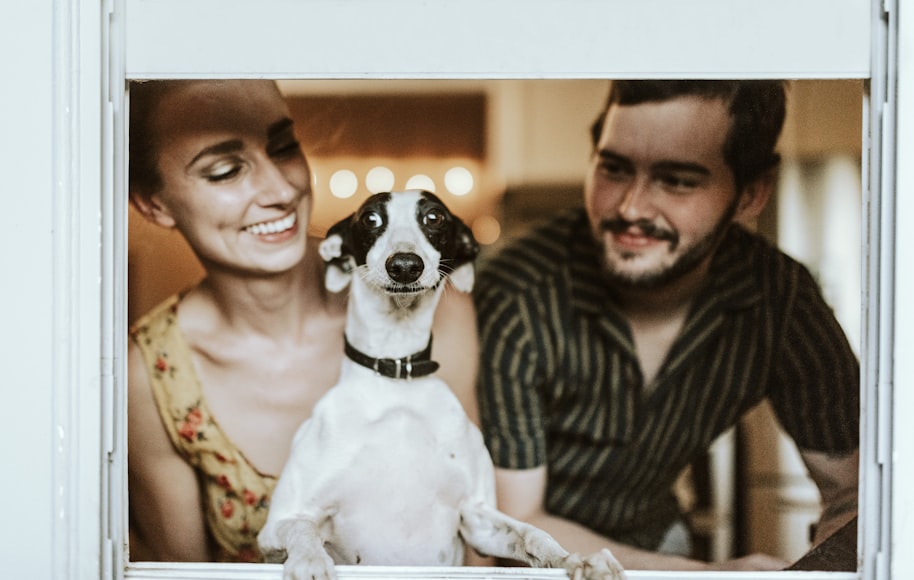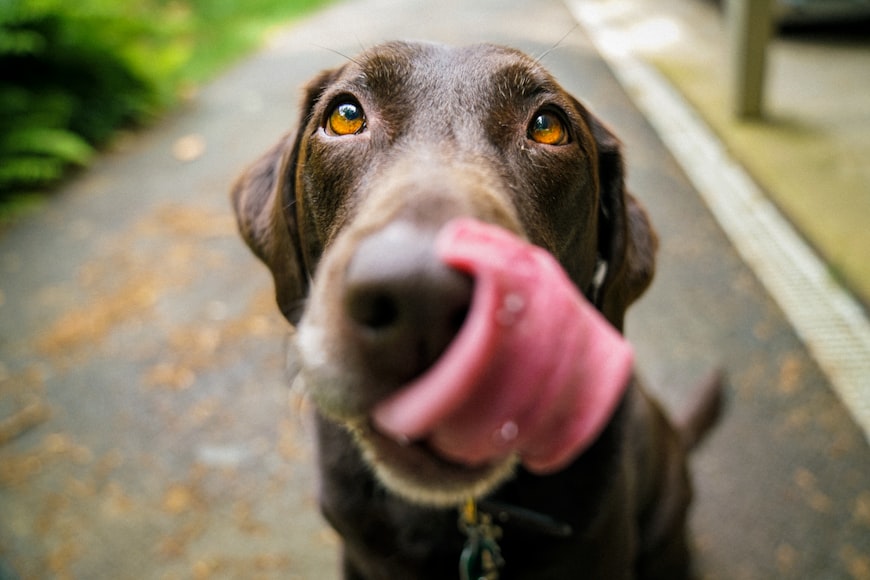Dandruff in Dogs: An Outline

Introduction
Dandruff, also known as seborrhea, is a common skin condition that affects dogs. It is caused by an overproduction of skin cells, which can lead to flakes of skin shedding from the coat. Dandruff can be a nuisance for both dogs and their owners, but it is usually not a serious medical condition.
Causes of Dandruff in Dogs
There are a number of factors that can contribute to the development of dandruff in dogs, including:
- Dry skin: Dogs with dry skin are more likely to develop dandruff. This can be caused by a number of factors, including low humidity, harsh weather conditions, and certain medical conditions.
- Allergies: Allergies to food, environmental allergens, or contact allergens can all cause dandruff in dogs.
- Skin infections: Bacterial or fungal skin infections can also lead to dandruff.
- Nutritional deficiencies: A diet that is deficient in certain nutrients, such as vitamin A, vitamin E, or omega-3 fatty acids, can contribute to the development of dandruff.
- Hormonal imbalances: Hormonal imbalances, such as those caused by hypothyroidism, can also cause dandruff in dogs.
Symptoms of Dandruff in Dogs
The most common symptom of dandruff in dogs is the presence of flakes of skin shedding from the coat. The flakes may be white, yellow, or gray, and they can vary in size from small to large. Other symptoms of dandruff in dogs can include:
- Itching: Dandruff can cause itching, which can lead to scratching and hair loss.
- Redness and inflammation: The skin around the flakes may be red and inflamed.
- Scabs and crusts: In severe cases, dandruff can lead to the formation of scabs and crusts on the skin.
Diagnosis of Dandruff in Dogs
Your veterinarian will be able to diagnose dandruff in your dog based on a physical examination and a review of your dog’s medical history. Your veterinarian may also recommend running some tests, such as a skin scraping or a blood test, to rule out other medical conditions that may be causing the dandruff.
Treatment of Dandruff in Dogs
The treatment for dandruff in dogs will depend on the underlying cause. If the dandruff is caused by dry skin, your veterinarian may recommend using a moisturizer or a shampoo specifically designed for dogs with dry skin. If the dandruff is caused by allergies, your veterinarian may recommend avoiding the allergen or using antihistamines to reduce the symptoms. If the dandruff is caused by a skin infection, your veterinarian may prescribe antibiotics or antifungal medication.
Prevention of Dandruff in Dogs
There are a number of things you can do to help prevent dandruff in your dog, including:
- Keep your dog’s skin clean and moisturized: Bathe your dog regularly with a gentle shampoo and use a moisturizer to keep its skin hydrated.
- Protect your dog from harsh weather conditions: Keep your dog indoors during extreme weather conditions, such as high heat or cold.
- Feed your dog a healthy diet: Feed your dog a diet that is rich in nutrients, such as vitamin A, vitamin E, and omega-3 fatty acids.
- Avoid allergens: If your dog is allergic to certain foods or environmental allergens, avoid exposing it to these allergens.
Conclusion
Dandruff is a common skin condition that affects dogs. It is usually not a serious medical condition, but it can be a nuisance for both dogs and their owners. There are a number of things you can do to help treat and prevent dandruff in your dog, including keeping its skin clean and moisturized, protecting it from harsh weather conditions, feeding it a healthy diet, and avoiding allergens.
Introduction

Introduction
Dandruff is a common skin condition that affects both humans and dogs. It is characterized by the shedding of dead skin cells from the scalp or skin. While dandruff in dogs is typically not a serious health concern, it can be unsightly and uncomfortable for your furry companion. Understanding the causes, symptoms, and treatment options for dog dandruff can help you keep your pet’s skin healthy and fresh.
What is Dog Dandruff?
Dandruff in dogs is the shedding of excess dead skin cells from the skin’s surface. These skin cells accumulate on the dog’s coat and skin, resulting in a white or gray flaky appearance. Dandruff can range from mild to severe, with some dogs experiencing just a few flakes while others have large amounts of flaky skin.
Prevalence and Commonly Affected Breeds
Dandruff is a common condition in dogs, affecting nearly 10-15% of the canine population. Certain breeds are more prone to developing dandruff, including:
- Retrievers
- Poodles
- Spaniels
- Terriers
- Bulldogs
- Pugs
Causes of Dog Dandruff
There are several factors that can contribute to the development of dandruff in dogs, including:
- Dry Skin: Dogs with dry skin are more likely to experience dandruff. Dry skin can be caused by various factors, such as low humidity, frequent bathing, or certain skin conditions.
- Allergies: Allergies, both food and environmental, can cause inflammation and irritation of the skin, leading to dandruff.
- Seborrhea: Seborrhea is a skin condition that results in the overproduction of oil by the skin glands. This excess oil can accumulate and cause dandruff.
- Yeast or Bacterial Infections: Yeast or bacterial infections on the skin can cause inflammation and irritation, leading to dandruff.
- Parasites: Parasites, such as fleas or mites, can cause irritation of the skin, resulting in dandruff.
Symptoms of Dog Dandruff
The primary symptom of dandruff in dogs is the shedding of excess dead skin cells. This dandruff can appear as white or gray flakes on the dog’s coat, bedding, or furniture. Other symptoms that may accompany dandruff include:
- Itching or scratching
- Red or irritated skin
- Dry or flaky skin
- Hair loss
- Foul odor
Treatment for Dog Dandruff
The treatment for dog dandruff will depend on the underlying cause. In many cases, simple home remedies can effectively alleviate the condition. However, if the dandruff is severe or persistent, it is important to consult with your veterinarian for proper diagnosis and treatment.
Home Remedies for Dog Dandruff
- Bathing: Bathing your dog with a gentle, moisturizing shampoo can help remove excess dead skin cells and reduce dryness.
- Oatmeal Baths: Oatmeal has soothing and anti-inflammatory properties that can help relieve itchy and irritated skin. You can add colloidal oatmeal to your dog’s bathwater or use an oatmeal-based shampoo.
- Coconut Oil: Coconut oil is a natural moisturizer that can help soothe dry and flaky skin. Apply a small amount to your dog’s skin and massage it in.
- Apple Cider Vinegar: Apple cider vinegar has antibacterial and antifungal properties that can help combat skin infections that contribute to dandruff. Dilute apple cider vinegar with an equal amount of water and apply it to your dog’s skin with a cotton ball or washcloth.
Veterinary Treatment for Dog Dandruff
If home remedies do not resolve your dog’s dandruff, your veterinarian may recommend the following treatments:
- Prescription Shampoos: Prescription shampoos contain medicated ingredients that can help reduce inflammation, kill bacteria or yeast, and moisturize the skin.
- Antibiotics or Antifungals: If an infection is present, your veterinarian may prescribe antibiotics or antifungals to clear it up.
- Skin Scrapings or Culture: Your veterinarian may perform a skin scraping or culture to identify the underlying cause of the dandruff, such as parasites or yeast infections.
- Dietary Changes: If food allergies are suspected, your veterinarian may recommend a hypoallergenic diet to eliminate potential allergens from your dog’s diet.
Prevention of Dog Dandruff
While not always possible, there are some steps you can take to help prevent dandruff in your dog:
- Keep your dog’s skin clean and well-groomed.
- Avoid over-bathing your dog.
- Use a gentle, moisturizing shampoo when bathing.
- Protect your dog from environmental allergens.
- Keep your dog’s bedding and toys clean.
- Provide your dog with a healthy diet.
By following these tips and seeking veterinary care when necessary, you can help keep your dog’s skin healthy and free of dandruff. Remember, dandruff is not typically a serious health concern, but it can cause discomfort and affect your dog’s overall well-being. By understanding the causes, symptoms, and treatments for dog dandruff, you can ensure your furry friend enjoys a happy and itch-free life.
Causes of Dandruff

Dandruff, characterized by an excessive shedding of skin flakes, is a common issue that affects dogs of all ages and breeds. While it can be unsightly and uncomfortable, dandruff is often a symptom of an underlying medical condition and should not be ignored.
Causes of Dandruff
The most common causes of dandruff in dogs include:
1. Skin Allergies:
Allergies to environmental allergens, such as pollen, dust mites, and certain foods, can trigger inflammation in the skin, leading to excessive shedding and dandruff.
2. Dry Skin:
Lack of moisture in the skin can cause dryness, flaking, and dandruff. This can be caused by a variety of factors, including genetics, environmental conditions, and certain medical conditions.
3. Nutritional Deficiencies:
Deficiencies in certain nutrients, such as omega-3 fatty acids, zinc, and vitamin A, can affect the skin’s health, leading to dryness and dandruff.
4. Yeast Infections:
Malassezia, a yeast that naturally lives on the skin, can overgrow in certain conditions, such as allergies or skin irritation, and cause dandruff.
5. Parasites:
Infestations with parasites, such as fleas, mites, and ringworms, can cause irritation and skin inflammation, resulting in dandruff.
Diagnosing the Cause
To determine the underlying cause of dandruff, it is important to consult with a veterinarian. They will perform a physical examination and may recommend additional tests, such as:
- Skin scraping or cytology to identify parasites or yeast infections
- Allergy testing to identify potential allergens
- Bloodwork to check for nutritional deficiencies
Treatment Options
The treatment for dandruff will depend on the underlying cause. Common treatments include:
- Medicated shampoos and conditioners to address allergies, yeast infections, or parasites
- Moisturizing treatments to reduce dry skin
- Nutritional supplements to correct deficiencies
- Antihistamines or other medications to manage allergies
- Regular grooming to remove dead skin cells and prevent buildup
Prevention
While it is not always possible to prevent dandruff entirely, taking certain steps can help reduce the risk:
- Keep your dog dry and clean
- Brush your dog regularly to remove dead skin cells
- Use a humidifier in your home to increase air moisture
- Provide a nutritious diet rich in omega-3 fatty acids and other essential nutrients
- Control parasites with regular flea and tick prevention
Conclusion
Dandruff in dogs can be caused by a variety of factors, ranging from skin allergies to nutritional deficiencies. By consulting with a veterinarian to determine the underlying cause, pet owners can effectively manage dandruff and improve their dog’s skin health. Remember, ignoring dandruff can worsen the condition and lead to discomfort for your furry friend.
Symptoms of Dandruff

As dog pet owners, we dote on our beloved companions, providing them with the best nutrition, grooming, and care. However, even the most pampered pooches can occasionally develop skin conditions, including the common ailment known as dandruff. Dandruff is characterized by an excessive amount of white flakes in the coat, resulting from an overproduction of skin cells. While it is not usually a serious condition, it can cause discomfort and irritation to your furry friend. In this article, we will delve into the symptoms, causes, and effective treatments for dandruff in dogs.
Symptoms of Dandruff
Dandruff in dogs can manifest itself through several noticeable symptoms:
- Excessive white flakes in the coat: The most prominent sign of dandruff is the appearance of white flakes that resemble snow or dandruff on human hair. These flakes can vary in size and may be more noticeable on dark-colored coats.
- Itching and scratching: Dandruff can cause intense itching and scratching, as the flakes irritate the skin. Prolonged scratching can lead to further skin damage, redness, and inflammation.
- Redness and irritation: The affected areas of the skin may appear red and irritated due to the constant scratching and rubbing. This discomfort can cause your dog to become restless and agitated.
- Dry, cracked skin: Dandruff can result in dry, cracked skin, which can be painful and uncomfortable for your dog. It may also make the skin more susceptible to infections.
Causes of Dandruff
The underlying causes of dandruff in dogs can be diverse and include:
- Dry skin: The most common cause of dandruff is dry skin. This can be due to a lack of moisture in the air, infrequent bathing, or the use of harsh shampoos that strip the skin of its natural oils.
- Allergies: Allergies to certain foods, environmental factors, or parasites can trigger an immune response that leads to dandruff.
- Hormonal imbalances: Thyroid problems or other hormonal imbalances can disrupt the skin’s normal function, resulting in dandruff.
- Infection: Bacterial or yeast infections on the skin can cause excessive skin cell production, leading to dandruff.
- Diet: A poor diet lacking in essential nutrients, such as omega-3 fatty acids, can contribute to dry skin and dandruff.
Treatment of Dandruff
Treating dandruff in dogs involves addressing the underlying cause and providing symptomatic relief. Here are some effective treatment options:
- Moisture therapy: Regular bathing with a gentle, moisturizing shampoo can help hydrate the skin and reduce flakes. Avoid using harsh shampoos or over-bathing, as this can worsen dry skin.
- Dietary changes: Implementing a healthy diet rich in omega-3 fatty acids, vitamins, and minerals can support skin health and reduce dandruff.
- Allergy management: Identifying and avoiding allergens that trigger dandruff can help control the condition.
- Medicated shampoos: Veterinary-prescribed shampoos containing antifungal or antibacterial agents can help treat infections that contribute to dandruff.
- Skin supplements: Omega-3 fatty acid supplements or other skin-supporting supplements can improve skin health and reduce dandruff.
- Underlying medical treatment: If dandruff is caused by an underlying medical condition, such as thyroid problems, treating the condition will resolve the dandruff.
Prevention of Dandruff
While not all cases of dandruff can be prevented, there are several measures you can take to reduce the risk of its development:
- Regular brushing: Brushing your dog’s coat regularly helps distribute natural oils and remove dead skin cells, preventing buildup and dandruff.
- Avoid harsh grooming: Use gentle grooming tools and avoid over-bathing your dog. Over-grooming can strip the skin of its natural oils.
- Provide a healthy diet: Feed your dog a well-balanced diet rich in essential nutrients to support skin health.
- Manage allergies: Identify and avoid allergens that trigger dandruff in your dog.
- Keep the environment humid: Using a humidifier in your home during dry weather can help increase moisture in the air and prevent dry skin.
Conclusion
Dandruff in dogs is a common skin condition that can cause discomfort and irritation. By understanding the symptoms, causes, and effective treatments, you can help alleviate your dog’s suffering and promote healthy, dandruff-free skin. Regular grooming, a balanced diet, and prompt veterinary attention can go a long way in managing and preventing dandruff in your beloved companion.
Diagnosis of Dandruff

Dandruff, also known as scaling, is a common skin condition that affects dogs. It is characterized by the presence of white or gray flakes on the dog’s coat and skin. While dandruff can be unsightly, it is generally not a serious condition. However, it can be indicative of underlying health issues that require treatment. This article will delve into the diagnosis of dandruff in dogs and provide insights into the various methods used to determine the cause of this skin condition.
Diagnosis of Dandruff
Diagnosing dandruff in dogs involves a comprehensive approach that includes physical examination, skin scraping or biopsy, and allergy testing. These methods aim to identify the underlying cause of the condition and rule out any serious medical problems.
1. Physical Examination
The initial step in diagnosing dandruff is a thorough physical examination by a veterinarian. The veterinarian will examine the dog’s skin and coat to assess the severity of the scaling and its distribution. They will also observe the dog’s overall health and check for any signs of infection or other skin conditions.
2. Skin Scraping or Biopsy
If the physical examination does not provide a definitive diagnosis, the veterinarian may perform a skin scraping or biopsy. Skin scraping involves using a scalpel to gently remove a small sample of skin cells from the affected area. The sample is then examined under a microscope to identify any parasites, bacteria, or fungi that may be causing the dandruff.
A biopsy involves removing a small piece of skin and sending it to a laboratory for analysis. Biopsy is typically performed when a skin scraping does not provide a clear diagnosis or if the veterinarian suspects a more serious underlying condition.
3. Allergy Testing
Allergic reactions are a common cause of dandruff in dogs. To determine if allergies are the underlying cause, the veterinarian may recommend allergy testing. Allergy testing involves exposing the dog to a series of allergens and observing the reaction. The veterinarian may use intradermal skin testing, blood tests, or both to identify the specific allergens that are triggering the dog’s dandruff.
Treatment Options
Treatment for dandruff in dogs will depend on the underlying cause. If the dandruff is caused by a parasitic infection, the veterinarian will prescribe medication to eliminate the parasite. If the dandruff is due to a bacterial or fungal infection, antibiotics or antifungal medications may be prescribed.
For dogs with allergies, treatment may involve avoiding the allergens that trigger the condition and administering antihistamines or other medications to reduce the allergic reaction. In some cases, immunotherapy, which involves gradually exposing the dog to the allergen in controlled doses, may be an effective treatment option.
In addition to medical treatment, there are several things you can do at home to help manage your dog’s dandruff:
- Regular bathing: Bathing your dog regularly with a gentle shampoo can help remove loose flakes and soothe dry skin.
- Brushing: Brushing your dog’s coat several times a week can help distribute natural oils and remove dead skin cells.
- Diet: Feeding your dog a healthy diet that is rich in essential fatty acids can help improve skin and coat health.
- Supplements: Omega-3 and omega-6 fatty acid supplements can help nourish the skin and reduce inflammation.
Conclusion
While dandruff in dogs is not typically a serious condition, it can be an indication of an underlying health problem. If your dog exhibits signs of dandruff, it is essential to seek veterinary attention for an accurate diagnosis and appropriate treatment. By understanding the various methods used to diagnose dandruff, you can help ensure your dog receives the best possible care and support.
Treatment Options
Dandruff is a common skin condition that affects both humans and dogs. It is characterized by excessive shedding of skin flakes, which can cause dryness, itching, and irritation. While dandruff is not typically a serious health concern, it can be a source of discomfort for your furry friend.
Causes of Dandruff in Dogs
There are several underlying causes that can contribute to dandruff in dogs, including:
- Allergies: Food allergies, environmental allergies, and flea allergies can all trigger dandruff.
- Yeast infections: Malassezia, a type of yeast that commonly lives on dogs’ skin, can overgrow and cause dandruff and other skin problems.
- Dry skin: Dogs with dry skin are more prone to dandruff due to a lack of moisture.
- Nutritional deficiencies: A diet deficient in essential nutrients, such as zinc, vitamin B6, and omega-3 fatty acids, can lead to dry skin and dandruff.
- Skin conditions: Certain skin conditions, such as eczema and seborrheic dermatitis, can cause dandruff as a symptom.
- Poor hygiene: Insufficient bathing or grooming can contribute to dandruff buildup.
Treatment Options for Dog Dandruff
The treatment for dandruff in dogs will depend on the underlying cause. Here are some common treatment options:
1. Antihistamines for Allergies
If allergies are causing your dog’s dandruff, antihistamines may be prescribed to alleviate the allergic reactions and reduce itching.
2. Medicated Shampoos for Yeast Infections
Yeast infections often require medicated shampoos containing antifungal ingredients, such as ketoconazole or miconazole. These shampoos help control the yeast overgrowth and reduce dandruff.
3. Topical Ointments for Dry Skin
For dogs with dry skin, topical ointments containing emollients and moisturizers can help soothe irritation, reduce flaking, and restore skin moisture.
4. Dietary Supplements for Nutritional Deficiencies
If nutritional deficiencies are contributing to dandruff, your veterinarian may recommend dietary supplements to ensure your dog is receiving adequate essential nutrients.
5. Prescription Medications
In some cases, prescription medications may be necessary to treat underlying skin conditions that are causing dandruff. These medications may include steroids or antibiotics.
6. Regular Bathing and Grooming
Regular bathing and grooming can help remove excess skin flakes and prevent dandruff buildup. Use a gentle shampoo designed specifically for dogs and avoid over-bathing, as this can further dry out the skin.
Home Remedies for Dog Dandruff
In addition to veterinary treatments, there are some home remedies that can help alleviate dandruff in dogs:
- Coconut oil: Applying coconut oil to your dog’s skin can help moisturize and soothe dry skin.
- Oatmeal baths: Oatmeal has anti-inflammatory properties that can help reduce itching and irritation. You can create an oatmeal bath by grinding oats into a powder and adding it to your dog’s bathwater.
- Apple cider vinegar: Apple cider vinegar diluted with water can help balance the skin’s pH levels and reduce yeast overgrowth. You can apply it to your dog’s skin using a cotton ball or spray bottle.
Prevention of Dog Dandruff
Preventing dandruff in dogs can be challenging, but there are some steps you can take to reduce the risk:
- Identify and avoid your dog’s allergy triggers.
- Bathe your dog regularly using a gentle shampoo.
- Brush your dog’s coat regularly to remove dead skin cells.
- Ensure your dog has a balanced diet that provides adequate essential nutrients.
- Provide your dog with a clean and comfortable living environment.
Remember, dandruff in dogs can be a sign of an underlying health condition. If you notice excessive dandruff or other skin problems, it is important to consult with your veterinarian for proper diagnosis and treatment. By following these treatment options and preventive measures, you can help your furry friend maintain a healthy and dandruff-free coat.
Home Remedies for Dandruff
Dandruff, a common skin condition affecting dogs, is characterized by the excessive shedding of dead skin cells. This can result in an itchy, flaky coat and discomfort for your canine companion. While commercial products can be effective in treating dandruff, there are also several natural home remedies that can provide relief.
What Causes Dog Dandruff?
Dandruff can be triggered by a variety of factors, including:
- Dry skin: Lack of moisture can cause the skin to become flaky and shed.
- Underlying skin conditions: Allergies, infections, and skin parasites can all contribute to dandruff.
- Dietary deficiencies: A diet lacking in certain essential vitamins and minerals can lead to skin problems, including dandruff.
- Hormonal imbalances: Changes in hormone levels, such as those caused by hypothyroidism, can affect skin health.
Home Remedies for Dog Dandruff
Oatmeal Baths
Colloidal oatmeal has soothing and anti-inflammatory properties that can help relieve itching and reduce dandruff. To make an oatmeal bath, grind plain oatmeal into a fine powder and add it to warm water. Allow your dog to soak for 10-15 minutes, then rinse thoroughly.
Apple Cider Vinegar Rinses
Diluted apple cider vinegar can help balance the skin’s pH levels and combat fungal infections that can contribute to dandruff. To make an apple cider vinegar rinse, mix equal parts vinegar and water. Apply the mixture to your dog’s coat after bathing, avoiding the eyes and mucous membranes.
Coconut Oil Massages
Coconut oil is rich in medium-chain fatty acids that can moisturize and soothe the skin. Regular massages with coconut oil can help reduce itching, flaking, and oxidative stress. Apply a small amount of coconut oil to your hands and gently massage into your dog’s coat.
Other Tips for Relieving Dandruff
- Brush your dog regularly: Brushing helps to remove dead skin cells and distribute natural oils throughout the coat.
- Provide a healthy diet: Ensure your dog’s diet is complete and balanced to support skin health.
- Control allergies: If your dog has allergies, identify and avoid the triggers to prevent skin irritation.
- See a veterinarian: If home remedies do not alleviate your dog’s dandruff or if the condition worsens, it’s important to consult a veterinarian for professional diagnosis and treatment.
Conclusion
Home remedies, such as oatmeal baths, apple cider vinegar rinses, and coconut oil massages, can effectively address dog dandruff and provide relief from itching and flaking. By following these tips, you can help your canine companion maintain healthy, moisturized skin and a lustrous coat. Remember, if dandruff persists or is severe, it’s essential to seek professional veterinary care to rule out any underlying medical conditions that may be contributing to the issue.
Prevention of Dandruff
Dandruff, the excessive shedding of dead skin cells, is a common issue that can affect dogs of all ages and breeds. While not typically a serious medical condition, dandruff can be unsightly and can cause discomfort for your pet. Fortunately, there are a number of simple steps you can take to prevent and reduce dandruff in your dog.
Regular Brushing and Bathing
One of the most effective ways to prevent dandruff is to brush your dog regularly. This helps to remove loose hair and dead skin cells, which can accumulate on the skin and lead to dandruff. Brushing also stimulates the production of natural oils, which can help to keep the skin healthy and moisturized.
In addition to regular brushing, bathing your dog with a gentle, hypoallergenic shampoo can also help to reduce dandruff. Be sure to avoid using harsh shampoos or soaps, as these can strip the skin of its natural oils and worsen the problem. When bathing your dog, be sure to rinse thoroughly to remove all traces of shampoo.
Use of Hypoallergenic Products
Some dogs are more prone to dandruff than others, and this can often be due to allergies or sensitivities to certain ingredients in their diet or grooming products. If you suspect that your dog has allergies, it is important to work with a veterinarian to identify and eliminate the allergens.
In addition to avoiding allergens, using hypoallergenic products can also help to reduce dandruff. These products are designed to be gentle on the skin and are less likely to cause irritation or allergic reactions. When choosing products for your dog, be sure to look for labels that say “hypoallergenic” or “for sensitive skin.”
A Balanced Diet
A healthy diet is essential for overall pet health, and it can also play a role in preventing dandruff. A diet that is rich in essential fatty acids, such as omega-3 and omega-6 fatty acids, can help to keep the skin healthy and moisturized. Good sources of fatty acids include fish, flaxseed, and olive oil.
Other Tips for Preventing Dandruff
In addition to the steps outlined above, there are a few other things you can do to help prevent dandruff in your dog:
- Keep your dog’s skin dry. Avoid getting your dog wet, and if they do get wet, be sure to dry them thoroughly.
- Avoid using harsh chemicals or grooming products on your dog’s skin.
- Take your dog to the veterinarian for regular checkups. Your veterinarian can help to identify and treat any underlying medical conditions that may be contributing to dandruff.
Conclusion
Dandruff is a common problem in dogs, but it can be prevented and reduced with proper care. By following the tips outlined in this article, you can help to keep your dog’s skin healthy and free of dandruff.
Complications of Dandruff
Dandruff, a common skin condition in dogs, is characterized by the appearance of white flakes or scales on the dog’s coat. While it is often a mild condition, untreated dandruff can lead to more severe complications, such as:
Secondary Infections
Inflammation caused by dandruff can create an ideal environment for bacteria and yeast to thrive. These microorganisms can cause secondary skin infections, such as:
- Pyoderma: Bacterial skin infection that causes pustules, ulcers, and crusty lesions.
- Malassezia Dermatitis: Yeast infection that causes itchy, red, and greasy skin.
- Ringworm: Fungal skin infection that forms circular, hairless patches.
Secondary infections can worsen the underlying skin condition and cause discomfort and pain to the dog.
Skin Damage
Chronic dandruff can lead to significant skin damage. The excessive scaling and inflammation can cause:
- Thickening of the Skin: Inflammation can lead to the production of excessive skin cells, resulting in thick, crusty skin.
- Hyperpigmentation: Increased melanin production can lead to darkening of the skin, especially in areas with severe dandruff.
- Lichenification: Skin becomes rough and thickened, resembling the texture of tree bark.
Severe skin damage can be irreversible and may require extensive treatment.
Hair Loss
Dandruff can weaken the hair follicles, leading to hair loss. Chronic inflammation and skin damage can cause the hair shafts to become brittle and break easily. In severe cases, excessive hair loss can result in bald patches or thinning of the coat.
Prevention and Treatment
Preventing and treating dandruff in dogs is crucial to avoid these complications. Here are some recommended measures:
- Regular Bathing: Bathing the dog with a medicated shampoo specifically designed for dandruff can help remove excess scales and reduce inflammation.
- Brushing: Regular brushing helps remove loose hair and scales, preventing them from accumulating on the skin.
- Dietary Changes: Some dogs may be allergic to certain foods, which can trigger dandruff. Identifying and eliminating these allergens can help control the condition.
- Omega-3 Fatty Acids: Supplementation with omega-3 fatty acids can help improve skin health and reduce inflammation.
- Medication: In severe cases, veterinary medication may be necessary to control the underlying cause of dandruff, such as antibiotics for bacterial infections or antifungal medications for yeast infections.
It’s important to note that dandruff can sometimes be a sign of an underlying medical condition, such as allergies, hormonal imbalances, or parasitic infestations. If the condition persists or worsens, consult a veterinarian for a proper diagnosis and treatment plan.
Conclusion
Dandruff in dogs, while often a minor inconvenience, can lead to more serious complications if left untreated. Secondary infections, skin damage, and hair loss can significantly impact the dog’s health and well-being. By following preventive measures and seeking veterinary care when necessary, you can help your furry friend maintain healthy skin and a beautiful coat.
When to Seek Veterinary Attention
Dandruff, the shedding of dead skin cells from the skin, is a common condition in dogs. While it can often be managed with home remedies, there are instances when veterinary intervention is necessary.
Understanding Dog Dandruff
Dog dandruff is caused by various factors, including:
- Dry skin
- Skin allergies
- Bacterial or fungal infections
- Parasites
- Underlying health conditions
Mild vs. Severe Dandruff
Most cases of dog dandruff are mild and can be controlled with regular brushing and bathing. However, severe dandruff can be a sign of a more serious underlying issue.
Symptoms of Severe Dandruff
Seek veterinary attention if your dog experiences any of the following symptoms:
- Excessive shedding that does not respond to regular grooming
- Large or thick flakes of dandruff
- Skin irritation or redness
- Hair loss
- Discharge or crusting on the skin
Failure to Respond to Home Remedies
If home remedies such as frequent brushing, oatmeal baths, and fish oil supplements have failed to improve the dandruff within a few weeks, it’s recommended to consult a veterinarian.
Underlying Health Conditions
Severe dandruff can sometimes be a sign of an underlying health condition, such as:
- Hypothyroidism
- Cushing’s disease
- Allergies
- Liver or kidney disease
- Parasitic infections
When to See a Veterinarian
It’s crucial to seek veterinary attention in the following situations:
- Severe or persistent dandruff that does not respond to home remedies
- Any other symptoms of skin irritation, such as redness, swelling, or itching
- Suspected underlying health conditions
- If your dog has a compromised immune system
Veterinary Diagnosis and Treatment
Your veterinarian will conduct a physical examination and may perform diagnostic tests to determine the underlying cause of the dandruff. Treatment options may include:
- Medicated shampoos and conditioners
- Antibacterial or antifungal medications
- Diet changes to address allergies or digestive issues
- Thyroid hormone replacement therapy (for hypothyroidism)
- Treatment for parasitic infections
- Management of underlying health conditions
Prevention and Management
Regular grooming, a healthy diet, and managing underlying health conditions can help prevent and control dog dandruff. Here are some tips:
- Brush your dog regularly to remove dead skin cells.
- Bathe your dog using a mild, hypoallergenic shampoo.
- Feed your dog a diet rich in omega-3 fatty acids, which can improve skin health.
- Address any allergies or skin sensitivities promptly.
- Consult your veterinarian regularly to monitor your dog’s skin health and detect any underlying issues early on.
By being vigilant about dog dandruff and seeking veterinary attention when necessary, you can help ensure your furry companion’s skin stays healthy and comfortable.
























